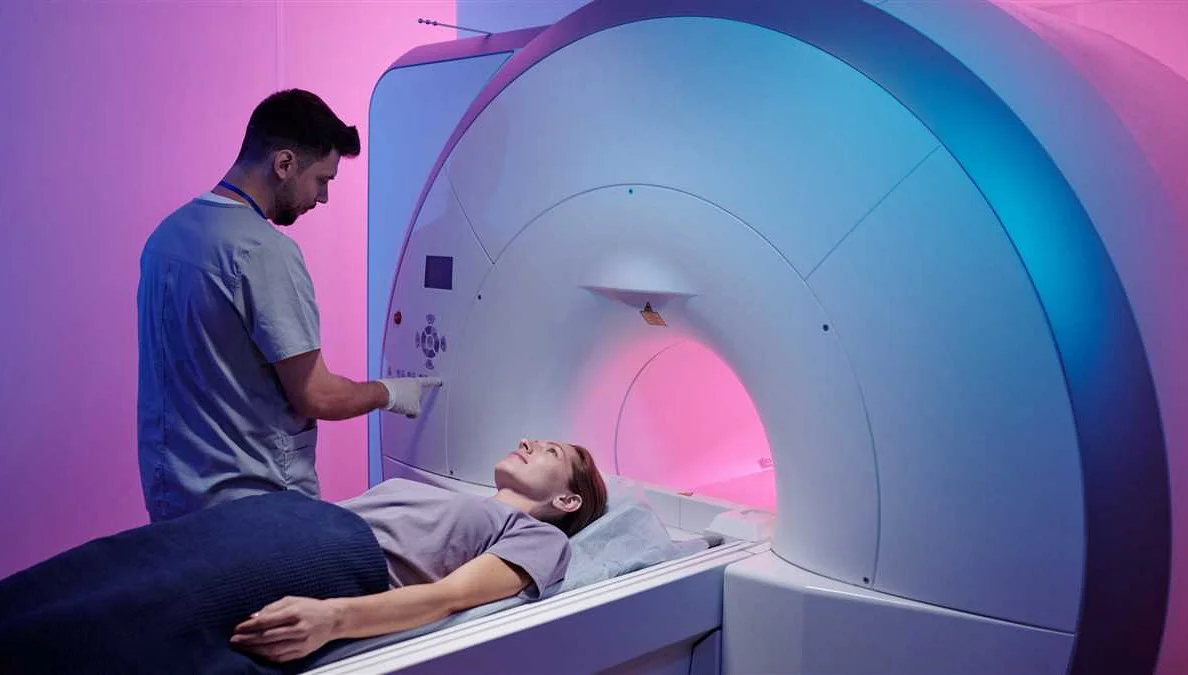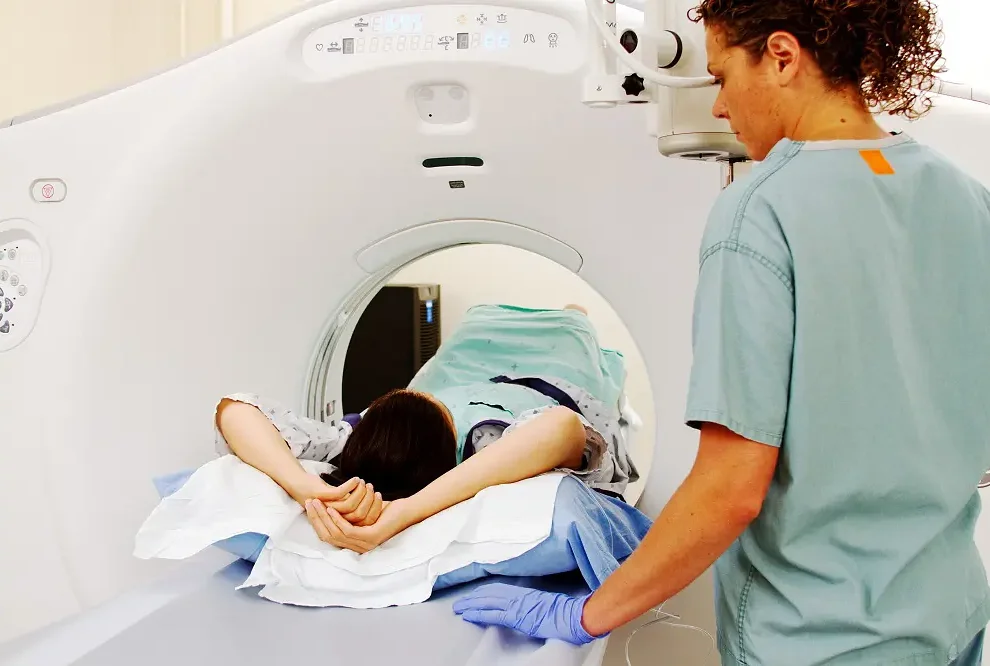Modern Approaches to MRI Examination: A Comprehensive Look
Содержимое
Discover the latest advancements in MRI technology and learn what a modern MRI examination entails. From improved image resolution to faster scanning times, find out how MRI has evolved and what it means for patients today.
The field of medical imaging has seen significant advancements in recent years, with magnetic resonance imaging (MRI) emerging as a valuable diagnostic tool. MRI uses powerful magnets and radio waves to create detailed images of the body’s internal structures. It provides a clear and comprehensive view of various organs and tissues, helping doctors make accurate diagnoses and plan appropriate treatment strategies.
In order to ensure the highest quality of MRI examinations, modern standards have been established. These standards are designed to optimize image quality, minimize patient discomfort, and enhance overall patient safety. They cover a wide range of aspects, including equipment specifications, imaging protocols, and safety measures.
One important aspect of MRI examination standards is the quality of the imaging equipment. State-of-the-art MRI machines are equipped with powerful magnets and advanced imaging software, allowing for sharper and more detailed images. Regular maintenance and calibration of the equipment are essential to ensure accurate and reliable results.
Another crucial element is the imaging protocol, which specifies the parameters used during the MRI scan. This includes the type of pulse sequences, acquisition time, and imaging planes. Standardized protocols help ensure consistency across different imaging centers, enabling accurate comparisons of images and facilitating collaboration between healthcare professionals.
Patient safety is also a top priority in modern MRI examination standards. Precautions are taken to minimize the risks associated with strong magnetic fields and radio waves. Patients are screened for any metal implants or other contraindications prior to the scan. Adequate safety measures, such as proper positioning and immobilization devices, are implemented to prevent patient motion during the examination.
In conclusion, modern standards for MRI examination play a crucial role in ensuring the accuracy, safety, and efficacy of this imaging modality. By following these standards, healthcare professionals can obtain clear and comprehensive images, allowing for accurate diagnoses and effective treatment planning.
Latest developments in MRI technology

Magnetic Resonance Imaging (MRI) has evolved significantly over the past few decades. With the advancements in technology, the latest developments in MRI have revolutionized the field of medical imaging. These developments have not only made MRI more efficient and accurate but have also expanded its applications in various medical specialties.
One of the significant advancements in MRI technology is the introduction of high-field scanners. These scanners operate at higher magnetic field strengths, typically 3 Tesla (T) or higher. High-field MRI provides better image quality, higher signal-to-noise ratio, and improved spatial resolution compared to lower field strengths. This advancement enables radiologists to obtain clearer and more detailed images, leading to better diagnostic accuracy.
Another major development in MRI technology is the incorporation of advanced imaging sequences. New imaging sequences, such as diffusion-weighted imaging (DWI), perfusion-weighted imaging (PWI), and spectroscopy, have expanded the capabilities of MRI. These sequences allow the assessment of tissue microstructure, perfusion, and metabolic characteristics, providing valuable information for the diagnosis and monitoring of various diseases.
Parallel imaging is another significant development in MRI technology. Parallel imaging techniques use arrays of multiple receiver coils to acquire data simultaneously, reducing image acquisition time. This advancement has led to shorter scan times, improved patient comfort, and increased throughput in clinical settings. Additionally, parallel imaging techniques have improved image quality by reducing artifacts caused by motion and other factors.
Recent developments in MRI technology also include the integration of artificial intelligence (AI) algorithms. AI algorithms can analyze large amounts of imaging data and assist radiologists in image interpretation, lesion detection, and quantitative analysis. This integration has the potential to enhance the efficiency and accuracy of MRI examinations, improving patient care.
| High-field scanners |
| Advanced imaging sequences |
| Parallel imaging |
| Integration of artificial intelligence |
In conclusion, the latest developments in MRI technology have significantly improved the capabilities and performance of MRI examinations. These advancements have enhanced image quality, reduced scan times, and expanded the applications of MRI in various medical specialties. As technology continues to advance, further developments in MRI are expected, promising even clearer visions and more precise diagnoses.
Importance of clear imaging in healthcare

In modern healthcare, clear imaging plays a crucial role in accurate diagnosis and efficient treatment planning. With the advancement in medical imaging technologies, such as magnetic resonance imaging (MRI), it has become essential to obtain clear and high-quality images to ensure accurate interpretation by healthcare professionals.
Clear imaging allows healthcare professionals to visualize internal structures and detect anomalies, enabling them to make informed decisions regarding patient care. High-resolution images provide detailed information about the condition of organs, tissues, and blood vessels, facilitating early detection and intervention of diseases.
Accurate diagnosis heavily relies on the clarity of imaging results. Precise detection of abnormalities, tumors, or injuries is vital in determining the appropriate treatment options. Clear imaging also enables healthcare professionals to monitor the progress of treatments, evaluate their effectiveness, and make necessary adjustments.
Moreover, clear imaging reduces the chance of misdiagnosis or missed diagnoses, which can have serious consequences for patients’ health. It minimizes the risk of unnecessary procedures or surgeries, leading to more cost-effective and efficient healthcare practices.
Additionally, clear imaging assists in medical research and the development of new treatment methods. High-quality images provide valuable data for analyzing patterns, studying disease progression, and identifying potential areas for improvement in healthcare practices.
In summary, clear imaging is of paramount importance in healthcare. It ensures accurate diagnosis, facilitates efficient treatment planning, reduces the risk of misdiagnosis, and contributes to medical research. By investing in advanced imaging technologies and striving for clear and high-quality images, healthcare providers can enhance patient care and improve overall healthcare outcomes.
How MRI examinations work
MRI examinations, or magnetic resonance imaging examinations, are a non-invasive medical imaging technique used to visualize internal structures of the body. They work by utilizing a strong magnetic field and radio waves to generate detailed images of the body’s organs, tissues, and structures.
During an MRI examination, the patient lies inside a large, tube-shaped machine that contains a powerful magnet. The magnetic field produced by the machine aligns the hydrogen atoms in the patient’s body. When radio waves are directed towards the body, the aligned hydrogen atoms absorb the energy and temporarily move out of their alignment.
As the hydrogen atoms return to their normal alignment, they release energy in the form of radio waves. These radio waves are detected by the MRI machine and converted into detailed images by a computer. The different types of tissues in the body produce varying amounts of signal, giving the images their contrast. This allows radiologists and physicians to differentiate between healthy and abnormal tissues.
Due to the strong magnetic field used during MRI examinations, it is important for patients to remove any metallic objects or devices that may be affected by the magnet. This includes jewelry, piercings, and certain medical implants. Patients may also be asked to wear a gown without any metallic components to ensure accurate imaging.
MRI examinations are commonly used in diagnosing a wide range of medical conditions, including brain and spinal cord abnormalities, tumors, joint and bone disorders, and cardiovascular diseases. They are safe and painless, making them a preferred imaging modality for many patients and healthcare providers.
Benefits of using modern standards for MRI
Modern standards for MRI examination have revolutionized the field of medical imaging, providing numerous benefits for patients and healthcare professionals alike. These standards offer improved image quality, enhanced diagnostic accuracy, and increased patient comfort. Here are some key benefits of using modern standards for MRI:
- Enhanced image quality: Modern standards for MRI employ advanced imaging techniques that significantly enhance the quality of images produced. This allows for better visualization of internal structures and abnormalities, leading to more accurate diagnoses and treatment planning.
- Improved diagnostic accuracy: With the use of modern standards, MRI examinations can provide healthcare professionals with more detailed and precise information about the patient’s condition. This allows for earlier detection of diseases, more accurate staging, and better assessment of treatment response.
- Reduced scan times: Modern standards have also led to the development of faster and more efficient MRI sequences. These advanced techniques enable shorter scan times, minimizing patient discomfort and reducing the risk of motion artifacts. In addition, shorter scan times contribute to increased patient throughput, allowing for more efficient use of resources in healthcare facilities.
- Enhanced patient comfort: The implementation of modern standards in MRI has resulted in improvements in patient comfort during the imaging process. These standards have led to the development of quieter MRI machines, as well as the use of specialized coils and padding to minimize patient discomfort. This can help alleviate anxiety and claustrophobia, resulting in a more positive patient experience.
- Increased safety: Modern standards for MRI have also prioritized patient safety by minimizing the potential risks associated with the imaging procedure. These standards include strict protocols for screening patients for contraindications, as well as measures to reduce the use of contrast agents and minimize the exposure to magnetic fields. This ensures that MRI examinations are performed with the highest level of safety for patients.
In conclusion, the adoption of modern standards for MRI examination brings significant benefits to both patients and healthcare professionals. These standards improve image quality, enhance diagnostic accuracy, reduce scan times, enhance patient comfort, and prioritize safety. As technology continues to advance, it is crucial for medical facilities to stay up to date with these modern standards to provide the best possible care to patients.